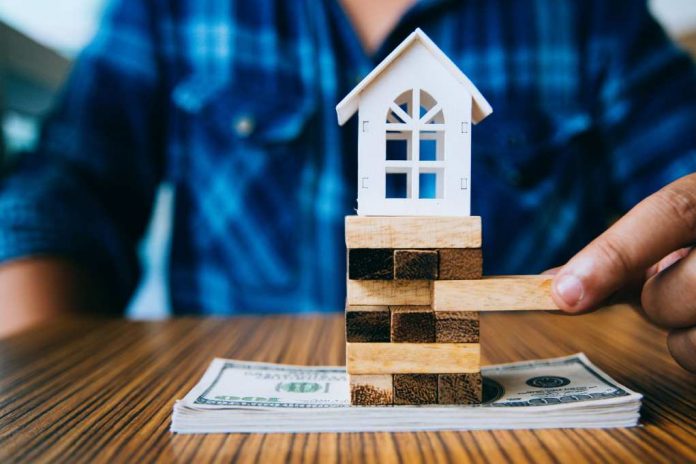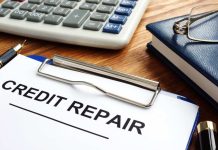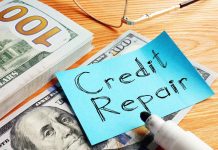
Home refinancing. You may have heard that term a lot, especially since mortgage rates are at a near all time low. However, what does it mean? How does it affect you? How does it work? These questions and more will be answered, just keep reading!
What is Home Refinancing?
Home refinancing is when a borrower replaces their existing home loan (mortgage) with a new mortgage. Sometimes referred to as mortgage refinancing, this is a popular option for homeowners to consider. There are many aspects that come into play when refinancing a mortgage.
How Does It Work?
A mortgage refinance is the process of replacing your existing mortgage with a new one. This can be done with either the same lender or a different one! It doesn’t have to stay with the same financial institution that you are currently borrowing from.
The process is similar to when you got your original mortgage. There is a lengthy process involved! You will need to submit an application for a new home loan but instead of the funds going toward the purchase of the home, they go to pay off the balance of your original loan.
Think of this as a reset on your current mortgage. When you refinance, you can change terms and potentially improve the overall health of your loan. Refinancing is popular amongst homeowners because it can save them money on their interest rate, improve their loan terms, and more.
It’s a common misconception that a mortgage refinance requires the borrower to repay the entire loan amount themselves. That’s not the case. Your mortgage lender will be the one to handle that mortgage during the refinance process.
Good Reasons People Refinance Their Mortgage
There are both good and bad reasons for a mortgage refinance. However, a mortgage refinance may be able to help you in many ways.
Reduce Your Interest Rate
Many borrowers look to refinance their home because they want to lower their interest rate. A lower interest rate can translate to many benefits for borrowers from getting a lower monthly payment, improved flexibility terms, lower repayment term conditions, and then some!
Consolidate Your Debt
There are countless types of debt that you will encounter over the course of your life. There are some that have high interest rates. When you have this high interest debt like credit card debt or other personal loans, you may benefit from a mortgage refinance.
Stop Paying Private Mortgage Insurance (PMI)
Some home loans have PMI. When people think of insurance, they may think of protection for themselves. This is not the case with PMI. PMI is a type of insurance that protects the lender. This is typically only required with some FHA home loans and conventional loans that have a less than 20% down payment. A mortgage refinance may be able to provide you the opportunity to get rid of a PMI.
Bad Reasons People Refinance Their Mortgage
Just as there is some good motivation to refinance a mortgage, there is some bad motivation as well. Not every reason people refinance can be good.
Save for a New Home
There are costs associated with a mortgage refinance. This process isn’t free! When everything is all said and done your break even point may take a few years to reach before you start fully reaping the benefits from your refinance. Even if you temporarily reduce your monthly payment, you still may lose money in the long run if you move before that break even point. A good rule of thumb is to wait to move after a refinance. Generally a borrower should wait 5 years to move after a refinance. It all depends on the break even point though!
Be Irresponsible with Funds
There are many types of refinances. One option is a cash out refinance (more on this below). This provides the borrower the money to get cash out of their home. However, instead of using the cash responsibly like through home improvements or debt management, you could waste it on anything else. Luxury purchases, frivolous spending, and more are not ways you should spend the money you get from this type of refinance. This can lead you down the wrong path in regards to your finances.
Increase Loan Terms
When borrowers refinance their mortgage, they typically reduce their loan terms. For example if the original mortgage was a 30-year term but was refinanced after 7 years into a 15-year term then you essentially shave off 8 years of repayment to handle your debt faster. On the flipside, you have the option to increase your loan terms, but this isn’t recommended. Even though you may have a reduced monthly payment, you could spend more over the life of your loan in interest compared to if you had your original mortgage.
You Just Bought a Home
While there is no limit or guidelines on how often or when you can refinance your home, you should still be smart about it! Even if the mortgage rates are lower now than when you closed, it all depends on when you will reach that break even point. You can calculate this using free online tools or by dividing the total loan costs by the monthly savings.
What are the Types of Mortgage Refinances?
There are different types of mortgage refinances. Before refinancing a mortgage, you want to make sure you understand your options. The three main types of mortgage refinances are:
- Rate and Term Refinance
- Cash Out Refinance
- Cash In Refinance
Rate and Term Refinance
This is one of the most popular refinance options amongst borrowers. In this mortgage refinance, the homeowner can update the interest rate and loan terms (length of the loan) of their mortgage. The new balance of your loan is the same amount that you currently owe on your existing mortgage.
Some common examples:
- Change your loan term from 30 years to 15 years
- Change your interest rate type from adjustable rate (ARM) to fixed
- Get a better interest rate (for example if your rate at signing was 4% you may be able to refinance and get a lower mortgage rate at 3.25%)
Borrowers choose this type of home refinance when they want to save money. These refinances typically result in a lower monthly payment. However, even if they don’t you could still save money in the long run by paying off your mortgage faster. Less years of mortgage repayment then the less amount of interest you will be responsible for.
Cash Out Refinance
Want to get cash out of your home? With a cash out refinance, you can tap into the equity you own on your home. For example, if your home is worth $250,000 and you owe $175,000 then you have $75,000 worth of home equity.
Your home equity isn’t just some liquid cash you can take out of an account at the bank. Instead, it is accessible through a loan. When you refinance your mortgage for the total value of your home (not just what you owe) then the money that is left over is the cash you got from your equity. This money is provided to the borrower at the time of closing.
Even though the main reason that borrowers consider this loan is to get money out of their house, the new mortgage can still have a lower interest rate and different loan terms compared to the original mortgage.
Due to the fact that lenders face a higher risk when dealing with cash out refinances, financial institutions will typically have strict eligibility. It is also a common rule of thumb that lenders usually wait until roughly 15% to 20% of a borrower’s home equity is available.
Cash In Refinance
Think of this type of mortgage refinance as the opposite of a cash out refinance. In this type of refinance, borrowers will provide additional money at the time of closing. These funds are meant to pay down the loan balance and overall reduce the amount that is borrowed from the bank.
Borrowers usually choose this type of refinance when they want to lower their loan-to-value ratio (LTV). On a conventional loan, borrowers are required to pay private mortgage insurance (PMI) premiums. In order to get rid of a home’s PMI, your LTV should be at least 80% or lower.
Understanding the Mortgage Refinance Process
When refinancing a mortgage, it is a very similar process to getting your original mortgage. You will need to go through the application and approval process in order to refinance your mortgage. Once your loan processor has your application, it will get reviewed by a mortgage underwriter. A mortgage underwriter is responsible for determining the risk factors involved in providing you a home loan. Underwriting can either be done manually by a real life person or automatically with a computer algorithm. Regardless of how it’s done, underwriting looks at factors like:
- Credit Score
- Credit History
- Income Level
- Employment History
- Assets
Your home will also need to be appraised. This will determine the current market value of the property. Once complete, the underwriter will determine whether or not you are able to qualify for the new home loan.
Luckily, even though the mortgage refinance process is similar to the process of buying a home, there are some key differences. One is the fact there is usually less documentation involved when you refinance your mortgage. This whole process usually takes 30 days on average but depends on many factors.
How Much Does it Cost to Refinance Your Home?
The refinance process is very similar to the homebuying process. Just as you dealt with closing costs before, you will have to do it again. The amount that you will pay in closing costs varies by mortgage. However, there are some costs that you can plan for:
- Origination Fee
- Application Fee
- Home Appraisal Fee
- Title Search
- Title Insurance
- Survey Fee
- Attorney Fees
- Other Legal Fees
- Recording Fees
- Processing Fee
- Underwriting Fee
- Homeowners Insurance
- Credit Check Fee
- Mortgage (Discount) Points
It is not guaranteed that you will encounter every type of fee. These are just some that you should be aware of so that you can properly prepare your finances. When looking for mortgages you may come across some that are advertised as “No Closing Cost Mortgages.” These may sound good but it is a little bit of false advertising.
Can You Avoid Closing Costs When Mortgage Refinancing?
Some lenders will say that you can refinance your mortgage with no closing costs. This isn’t necessarily true. Instead of paying for the closing costs at the time of closing, the lender will roll them into your mortgage. They typically only do this if you have enough equity in your home. So while there may be no closing costs upfront, there are still closing costs. You just pay them through your loan.
While no closing costs up front may immediately sound like a good idea, there are some drawbacks to keep in mind. When you add those closing costs into your home loan, you end up increasing the overall loan balance. This increased loan balance can mean paying more interest which can cost thousands over the course of the loan.
What are Mortgage (Discount) Points?
First and foremost, this is an optional fee. This means you do not have to purchase these when you refinance your mortgage. A mortgage point is a fee that a borrower has the option to pay if they want to reduce their interest rate. Lenders provide these points so they generally set limits on how many points a borrower can buy. One point will cost the borrower 1% of the mortgage amount. For example, if the mortgage is $250,000 then one mortgage point will be $2,500.
You can pay for these mortgage points during closing or you may be able to roll them into your loan. Mortgage points can be worth it if it makes sense for your current financial situation. Factors like your break even point, your credit score, how long you will be living in the home, and more can affect whether or not you should buy these discount points.
Commonly Asked Questions About Mortgage Refinancing
The mortgage refinance process has a lot of information involved. There are some commonly asked questions that may be able to provide you more insight about the refinance process.
What are Streamline Refinances?
When looking up refinancing, you may have come across the term “Streamline Refinance”. In a normal mortgage refinance, lenders will need to verify your information. When you get a streamline refinance, you may be able to skip the verification process. You can do this with updated underwriting requirements that are meant to fast track the process.
You can see that to achieve a streamlined refinance, underwriting factors like the home appraisal, income verification, and credit check are usually waived. Not every homeowner has access to this type of loan. Typically only loans that are backed by the federal government qualify.
When Should You Refinance Your Home?
This timeline varies depending on the person. Some people may benefit from refinancing their home after 7 years while others may benefit after 9 years. There are many factors that determine when you should refinance your home. Looking at your break even point, your credit score, and more can help you make this decision. If you need assistance your financial institution or a financial professional may be able to help you break down the numbers so you can make the best decision.
Do I Need to Refinance in Order to Tap Into My Home’s Equity?
Your home equity isn’t liquid cash that you can just get whenever or however. That is why people use cash out refinances. However, there are also ways you can tap into your equity if you want to avoid a refinance but still want to access this equity. A Home Equity Line of Credit (HELOC) provides borrowers the opportunity to borrow against their home equity.
Can it Be Too Late to Refinance a Mortgage?
There are no guidelines or rules about when you can refinance. However, some instances may not make sense. If you paid your mortgage for 20 years and only have 10 years remaining, your loan terms could change to 15 years when you refinance. If that’s the case then you increased your loan repayment terms which can cost you more in the long run.
Are There Ways to Save on Your Current Mortgage if You Don’t Want to Refinance?
Yes! You can keep your existing mortgage but make a higher monthly payment. When you make a higher monthly payment, this reduces the total time that you will be responsible for repaying the loan. This can mean less interest in the end.
Can You Refinance A Mortgage if You Have Bad Credit
Every lender has different credit requirements for their refinancing options. Typically you will need a score around 620 in order to qualify. Some loans like an FHA loan can provide borrowers the opportunity to refinance with credit scores as low as 580. However, your credit has a big impact on your interest rate so you should make sure that it is still worth the refinance if your score is that bad. You may be able to get a pre-approval from your lender to avoid a hard inquiry yet get insight about your eligibility.
Overall
Mortgage refinances require a lot of time, patience, and effort. That is why it is important to make educated decisions along the way. A mortgage refinance may be a good option for you to consider. People typically refinance when they want to get a lower monthly payment, improve their interest rate, improve their loan terms, or get cash out of their home. In order to determine if this is a good idea for you then you will need to keep in consideration multiple factors like your break even point, your credit score, and more. Take your time, and you may find the mortgage refinance process isn’t as hard as you thought!
Article References
https://www.bankrate.com/calculators/mortgages/mortgage-refinance-break-even-calculator.aspx
https://themortgagereports.com/16096/refinance-mortgage-rates
https://themortgagereports.com/74024/cost-to-refinance-a-mortgage#costs
https://www.lendingtree.com/home/refinance/credit-score-needed-refinancing/


























